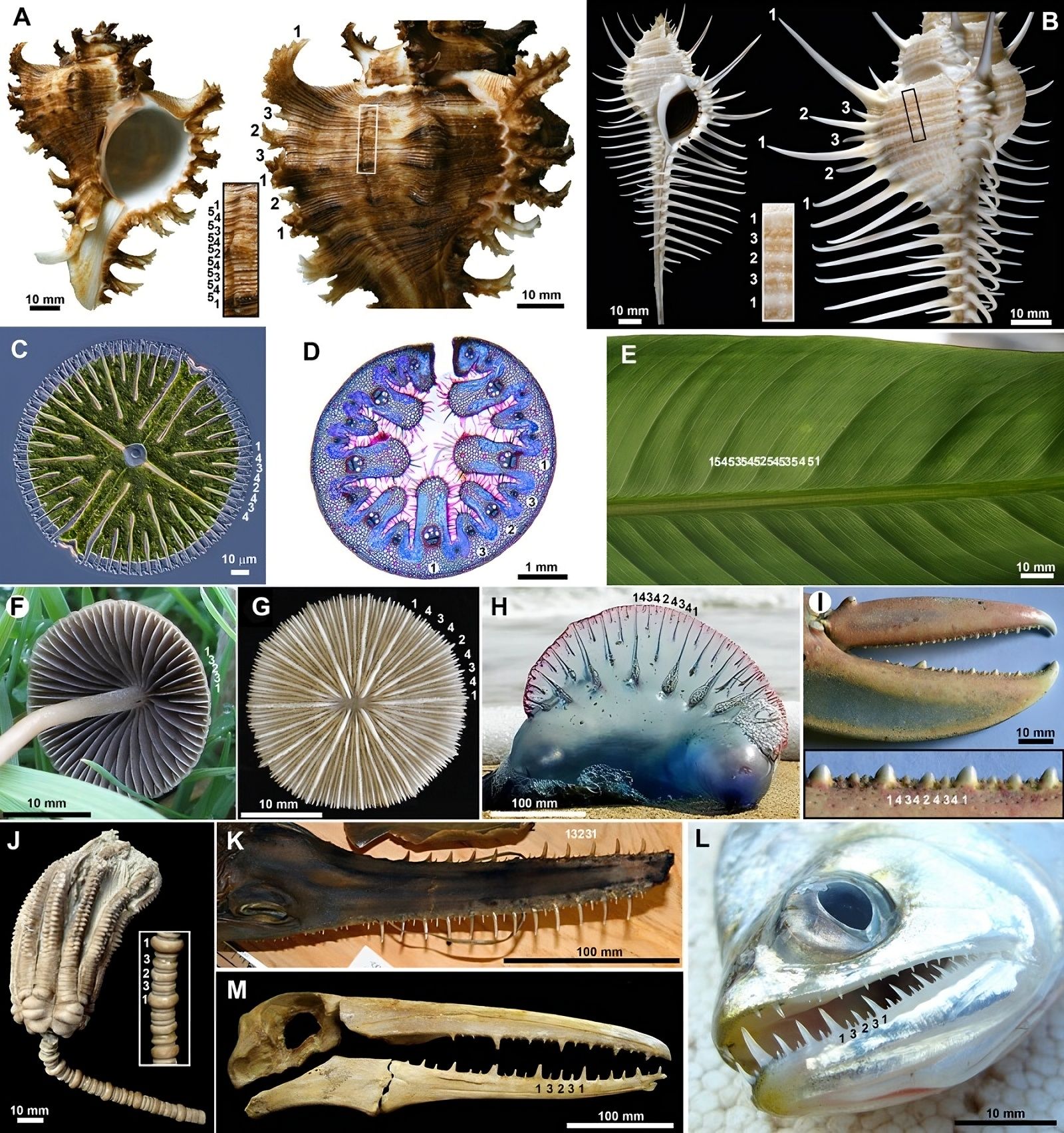Follow us on Google News (click on ☆)
Some gastropod shells are adorned with spiny structures exhibiting fractal-like complexity (in the mathematical sense, where details repeat at all scales). These ornaments, long enigmatic, now find an explanation through a physical model coupling mechanical instability and sequential growth.

Hierarchical patterns in various structures across plants, fungi, and animals.
The scientists show that the fractal spines of gastropod shells form when a mechanical instability of the secretory membrane episodically expands a mechanically generated self-similar pattern of micro-folds. During growth, this transformation leaves spiral striations on the shell.
A growth dynamic shared across living organisms
This mechanism is not unique to shells. It reflects a generic growth dynamic observed in many organisms.
The study identifies similar structures in the three major kingdoms of life (animal, plant, and fungal) all exhibiting sequential growth following the same generic dynamic. Among them: the cell walls of unicellular algae, leaf veins, fungal gills, the floats of Portuguese man o' war, coral skeletons, lobster claw denticles, crinoid stems, sawshark denticles...
All these structures, although very distant, share a development scheme based on the recursive subdivision of a growing domain, associated with an irreversibility condition giving the system a "memory."
This study at the interface between physics, biology, and geology reveals a cross-cutting developmental law and proposes a new theoretical framework for analyzing the morphogenesis of these complex biological structures.